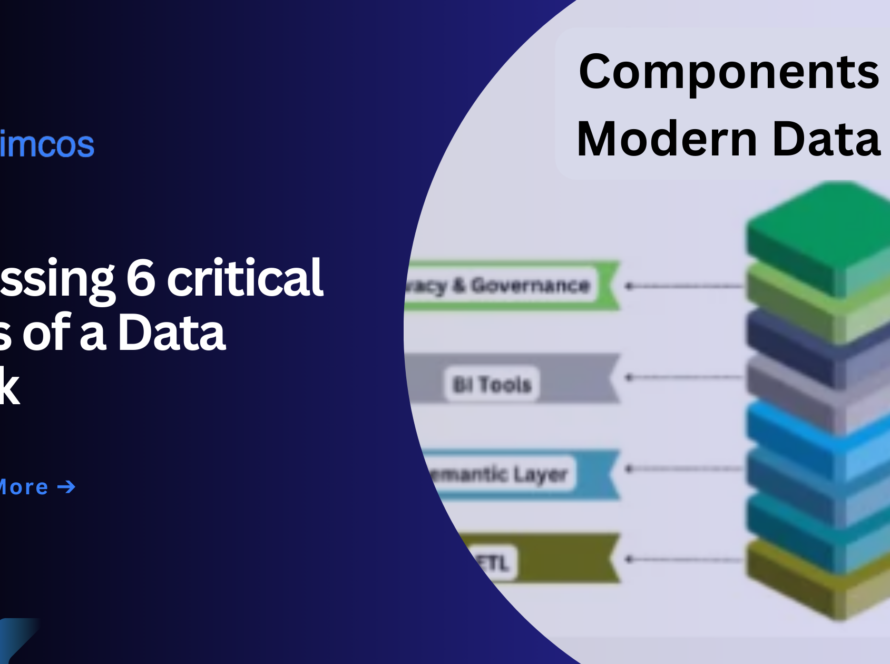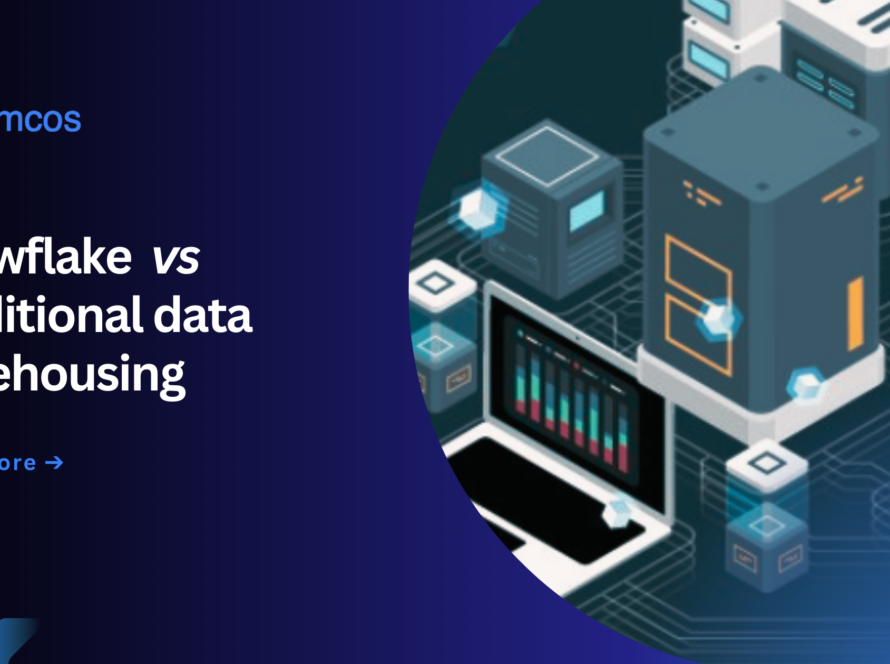Snowflake Architecture is a system that basically stores data, processes tasks and manages everything right from security to optimization. With an increase in the need to manage large volumes of data, more and more companies take help from cloud data warehouses, especially Snowflake. Therefore, this requires a deeper understanding of Snowflake architecture. Since these platforms easily adapt and expand without much hassle, they are really the only valid option to work with the enormous data volumes of today. Launched in 2014, Snowflake is among those cloud data solutions that are highly demanded. Recently, it scored a place among top-20 most valuable global unicorns and the top-10 most expensive unicorns in the US:.
The rise of Snowflake is linked to the rise in data-driven decision-making. The huge value locked within their data finally started to make some sense to enterprises across various industries. Snowflake’s deployment enables them to unlock that potential through its robust and expandable platform for data warehousing, analysis and collaboration. Given its unique architecture and profound commitment to innovation, Snowflake is well placed to continue leading in the data management world.
Table of Contents
What does Snowflake do for you?
Snowflake is a data platform hosted in the cloud. It offers very good performance regarding different tasks: data warehousing, data lakes and data analysis. Among the key strong points is processing a huge amount of tasks at the same time so that users always perform their job without setbacks.
It provides much faster, more user-friendly solutions for data warehousing, processing and analysis. Unlike the other options, Snowflake is built differently: besides taking SQL queries, it has an architecture designed for the cloud.
Snowflake does not stop itself from just storing and analyzing the data. It acts as the central hub for data collaboration. Data analysts and business users collaborate on one single platform. Data silos and multiple copies are not required anymore and it gives a more connected approach to data.

Snowflake’s Core: A Three-Layer Breakdown
Snowflake can be understood to a great depth by understanding its architecture, which the explanation of Snowflake’s data warehouse operation will be broken down into. It works like a snowflake through three layers. The cloud services layer acts as the control center, managing security or user interaction. The compute layer does the running of queries and handling of data by having virtual warehouses which independently be scaled up or down in size. Finally, there is a storage layer: to store all your data securely in compressed format, independent of the compute layer for efficient retrieval.
1. Cloud Services : The Command Center
This topmost layer acts as the control center for the whole data warehouse. It governs all the activities and functions in Snowflake. Infrastructure management, access control, sharing of data, metadata management, security, authentication, query optimization are a few services included in the cloud layer.
Also, with respect to this, the services layer does enhance data accessibility through a metadata store. Not all commands, for example, dropping or creating a table or resizing any table, require the warehouse to be up and running. This makes the section shown above as the outermost layer the user interface.
Another strong feature of Snowflake is caching. Here, it has set up two types of caches. The Metadata cache holds critical data about the tables-like size, references, etc. and partitions. The Results cache holds the output of recently run queries that expired in 24 hours. If you execute a query that another user has recently run, you receive results from the cache, not from the warehouse itself.
2. Compute Layer: Processing Powerhouse
It consists of a set of virtual warehouses to scale and perform parallel processing. Each department will have its own virtual warehouse to hold data related to the respective department. Compute layer is used to execute queries and fetch data from the warehouse. It also maintains a Raw Data Cache for recently accessed cloud data.Apart from the fact that it create any number of warehouses a user may want, Snowflake also allows them to alter the sizes.
In other words, with the workloads growing in size, the size of virtual warehouses grows proportionally to meet the requirements of users in a better manner.Another unique feature is the multi-cluster. The architecture of Snowflake create as many clusters as necessary on its network and also generate well-clustered tables. This means it avoids concurrency issues and shutting down of systems.
3. Storage Layer: The Data Vault
This would serve as an area where all data was stored in its raw form. Storage Layer: Compression of data into blocks using a hybrid columnar storage format to speed up and simplify queries. Instead of having to scan through entire rows of data, the system directly accesses the relevant column and extracts the needed information.
The good news is that, in Snowflake, the storage layer works completely separately from the compute layer, which means that if there is high concurrency, no redistribution of data will take or be required to place. Of course, this does not mean the storage layer is completely isolated from the other layers. In fact, the Query Processing and Storage Layers interact continuously for synchronization and integration purposes.

Benefits beyond Architecture
While the core of the blog focuses on snowflake architecture, explore some additional benefits of Snowflake beyond its technical design. This includes cost optimization features like pay-as-you-go pricing and zero-downtime scaling.
➤ Pay-As-You-Go Savings
Traditional data warehouses require you to pay for a fixed amount of storage and processing power irrespective of actual usage. Snowflake changes that because of its pay-as-you-go model: it charges you only for resources utilized, just like electricity.
That means not paying for unused capacity, which eradicates inefficiencies. It’s just like turning off the office lights; you pay for what you use with Snowflake. This way, data management will be more cost-effective than ever.
➤ Fast & Easy Learning
Snowflake uses a SQL language quite familiar to those working with most popular databases. This means that data analysts and business users who have basic training in SQL start using Snowflake right away with very little training. You won’t need months of investment in learning how to use yet another new system.
Snowflake speaks the language of data with which you’re already so familiar. This ease of use accelerates the use of data, making your learning curve easier and your productivity higher from day one.
➤ Seamless Integrations
Our platform integrates seamlessly with the various data tools and applications you’re already using. It connects seamlessly, allowing you to continue using your favorite tools for data visualization and exploration. It gives this integration capability to all of your tools, bringing everything into one unified platform.
Given our bridging of existing systems and applications, it gets way easier to work on through our platform. This enhances your overall data management experience by making it so much easier to continue with your traditional processes while employing new capabilities.
➤ Improved Collaboration and Governance
Our platform is designed to heighten data security and effectiveness in sharing with internal teams and those of our partners. With fine-grained access controls, it ensures only authorized users access particular datasets, hence protecting data privacy and preventing unauthorized access.
The robust governance framework here creates a collaborative environment where teams work together on data-driven projects without compromising security and the integrity of the data. A platform to drive workgroup collaboration, enabling controlled and secure access.
Snowflake’s innovative architecture and commitment to user experience make it a powerful tool for organizations of all sizes. Its scalability, security and ease of use empower businesses to unlock the true potential of their data, leading to better decision-making and a competitive edge.

How Himcos helps with Snowflake Implementation
Himcos understands the complexities of data management and the transformative power of Snowflake. Our team of experts help you design, implement and manage a robust data warehouse solution tailored to your specific needs. Himcos leverages Snowflake to build organized datasets, data lakes and data pipelines, ensuring a streamlined and efficient data management experience for your business.



